The third edition of Darsena Residency at Massimodeluca comes to an end with the exhibition “Tigers in Flip-Flops”, on view until next October, 15.
We talked about it with its protagonists, the Italian-Belgian duo VOID (Arnaud Eeckhout & Mauro Vitturini) and the Portuguese Marco Godinho.
Darsena Residency at its third edition, created by Marina Bastianello and curated by Daniele Capra, culminates with the exhibition “Tigers in Flip-Flops” that collects some works realized during this residency path. The city of Venice with its conformation, its location not only geographical, but social and cultural, plays a stimulating and exciting role in relation to an exhibition project.
What influence did it have for you? What kind of experience was this one at Galleria Massimodeluca?
VOID: The Venetian territory was the source of inspiration for all the works we realized. Since the beginning we were very motivated to work on new projects based on the experience we were about to have in Venice. Working in-situ it’s always exciting to us because it’s a challenge, since we never know what is going to happen. And the Darsena Residency was a very good spot to get inspired and to work, with a great team by our side. And the great Marco Godinho! The presence of many factories, industrial high quality production places, but also craftsmen and scientific researchers around Venice (especially in the Mestre neighborhood) gave us the input to work for instance with glassblowers as well as with the scientists from ISMAR, who are mapping the Venetian Lagoon with the newest Sonar technologies.
An extremely heterogeneous exhibition, that goes from photography, to glass sculpture, to environmental installation of sound art ,.. Can these choices of expressions be considered as the reflection of an intense cultural contamination moment?
VOID: Absolutely. That’s why residencies are so important in an artistic research. They give to us the opportunity to change context and open new horizons. The pieces we created during the residency probably would have never come out in our Brussels Studio. But the best thing is that those project can still make sense if we bring them out of the context of Venice. It’s always a challenge to develop works that are interesting both in a local and global context, taking out a universality from a specific context.
The emblematic title of the exhibition Tigers in Flip-Flops refers to the contemporary artist’s conditions. How is this paradoxical image reflecting your role?
VOID: Words create images. And associating two words of very different nature (such as flip-flops and tiger) creates in the mind of the reader a brand new image, which will be different for everyone since no one have never seen a tiger in flip-flops. It’s a surrealist game, certainly a part of our belgian touch. But it also connects with the status of the artist who always has to create new images, new visual and conceptual shapes.
M.G: ‘’Tigers in Flip-flops’’ is for me the first work of the exhibition that opens the imaginary to an endless process of thinking. It is also the consequence of a context, which was revealed during the residence and the conversations we had all together. The fact that the residency took place during the summer time for sure influenced the title and the way how to dress, feel comfortable and ready to explore and welcome people in different contexts. Wearing flip-flops all the time during the residency, walking around with slippers without socks was for me like connecting several worlds together. Public and private become the same, the same interaction as a sharing of intimacy of our a living spaces. Outside becomes inside, the studio is no more studio, home no more home, the whole world is the studio. For me walking around with Flip-flops while I am supposed to take part in a residence is a gesture of freedom and live life as the condition of an animal, as a stray dog, a wolf or a tiger. They have a permanent connection to the ground and the notion of home is dissolved into several places. This condition as to do also with uncertainty of everyday life and precarious life the only life worth living. I try to live a day like a lifetime, as a permanent experience which leads to an open relationship to the other, to the world, where everything can connect and disconnect in the flow of our common memories.
Among the works on view, the sculptures series of “Glasswork” realized through the complex manufacturing techniques of Murano and “Au claire de la lune” realized through tin melting.
Venice, and Veneto in general, are characterized by a strong craftsmanship and know-how culture coming from ancient traditions. This possibility to have rooted craftsmanship at your disposal, how much did it influence your work?
VOID: As we said, the territory, its history and possibilities did very much influence our works for this exhibition. We always like to experiment, to push our and other people’s boundaries, challenge the onlooker of course, but first ourselves and the people who have no understanding of what we do, what we want to do and why: asking a glassblower to sing into the blowing tube to let his voice shape the glass might sound crazy, but it certainly creates a short-circuit in the mind of the craftsman, which might open or not new paths in his practice. This is also what art is, what art does. What you see in museums or galleries is only the final product, the last bit of a wonderful and fertile journey. We are also very influenced by the thought of Marshall McLuhan and his famous sentence: The medium is the message . Every time we choose a precise medium to give shape to our conceptual research, we keep in mind that that material brings its own meaning and background, according to the cultural knowledge of the audience.
Among the works realized during your residency, I was particularly impressed with “The Mediterranean Sea as a Suspended Territory”, an extremely current title that inevitably reminds of the recent events that have affected the country’s socio-political situation and of the art’s role today. This artwork leads to a reflection on the acceptance of differences and multiculturalism, but also on the role that art can still pay in creating a common ground for mutual engagement. In such a critical time of divisions, is art giving its personal message in order to support the richness of diversity?
M.G.: For me the context and the temporality in which I work and move is very important, it’s always part of my creative process. At the residency the fact that the Gallery is near the lagoon and it’s somehow in the periphery of Venise, gave me a lot of possibilities to experience the tension between a urban and a liquid territory surrounded by water. Also the fact that the residency took place in Italie and in the Sud of Europe, was for me an infinite source of exploration. Living in Paris and Luxembourg and born in Portugal exploring this territory of the Sud is like going back searching for something connected to the feeling of home. Also the connection to the Mediterranean Sea and what is going on in our society, linked to immigration, exile and perpetual displacement of people looking for a better life conditions concerns me all the time. The fact also I arrive the day of full moon was the starting poing of the main work I realized at the residency. I tried to connect for exemple in the work ‘’Lunar Cycle (9 July – 6 August 2017)’’ the presence of the universe, the cycle of the moon to the local everyday newspaper ‘’Il Gazzettino’’. The fact to connect the everyday news with the cycle of the moon opened a lot of layers of interpretation, specially connected to our way of life which seems more and more disconnected with nature and natural phenomena. Also make disappear by the shape of the moon the information and see what remains, which fragment of our common memory still activated and perceptible. Also the fact to collect, to go everyday out to buy the newspaper was part of the process. Going out, be outside, and use the world as a workshop, as a studio where life interacts in the process of thinking, of making. Everything starts for me with an experience that implicates the scale of my body. Everything is experience, as this shoes that I found in the street, a pair of mocassin and a few meters further at the lagoon which surrounds the Forte Marghera (a nineteenth-century fortress and former barracks of the Italien Army). The fort was part of the Mestre’s defensive camp and the widest defensive system in the lagoon. Exploring the borders of this fort I found some tree roots who made a temporary stop carried away by the flow of the Mediterranean Sea. Back to the gallery I connected the found shoes with the tree root to create a fortunate encounter between two elements which are residues of our consumer and natural society. All this has in common a endless process of thinking who is trying to open and to break the social and cultural conventions in which one remains locked up. This work entitled ’’A slight change in direction’’ is also anthropometrically identical to the measurement of a long step. Other works created in the context of the residency as ‘’Going south is not the same as going south/Going south is not the same as going north’’ are concerned with the psychological perception of geography or use the weather, the sun and the moonlight as the material to explore a work that uses the entire duration of the exhibition to be created. The exhibition is therefore the moment of the creation of the work that will be ready the moment where the exhibition ends and that the public can not see then. This work entitled ‘’Home is no longer warm’’ opens the question of the presence and the absence of natural presence in a space and the notion of hospitality. About this questions of absence and presence and psychological perception of geography ‘’The Mediterranean Sea as a suspended territory’’ is a work that consists of two gold wire earrings in the shape of the Mediterranean Sea that, during the inauguration will be worn by the gallery’s directress. The work alludes to the inextricable network of relationships–cultural, economic, and social–that links the people who face up to this sea, and that the geopolitical events of recent months seem to have made us forget. It is both a warning about our condition and a hope of change.
Laura Rositani
Info:
VOID & Marco Godinho, ”Tigers in Flip-Flops”
September 30 – October 15 2017
Galleria Massimodeluca, Mestre
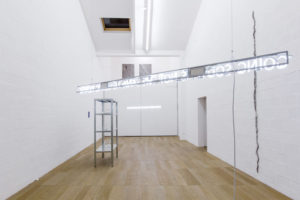 Tigers in Flip Flop, installation view, photo Nico Covre e Galleria Massimodeluca
Tigers in Flip Flop, installation view, photo Nico Covre e Galleria Massimodeluca
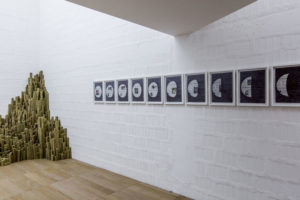 Tigers in Flip Flop, installation view, photo Nico Covre e Galleria Massimodeluca
Tigers in Flip Flop, installation view, photo Nico Covre e Galleria Massimodeluca
 Marco Godinho, Going north is not the same as going south
Marco Godinho, Going north is not the same as going south
 Void, Au claire de la lune (particolare), 2017
Void, Au claire de la lune (particolare), 2017
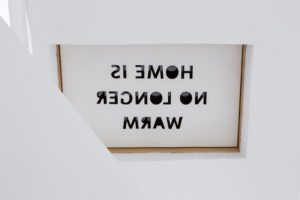 Marco Godinho, Home is no longer warm
Marco Godinho, Home is no longer warm
 Void, Orgue basaltique, 2017, photo Nico Covre e Galleria Massimodeluca
Void, Orgue basaltique, 2017, photo Nico Covre e Galleria Massimodeluca
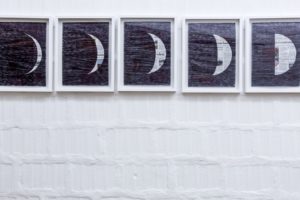 Marco Godinho, Lunar Cycle (9 July – 6 August 2017) (particolare), 2017, photo Nico Covre e Galleria Massimodeluca
Marco Godinho, Lunar Cycle (9 July – 6 August 2017) (particolare), 2017, photo Nico Covre e Galleria Massimodeluca
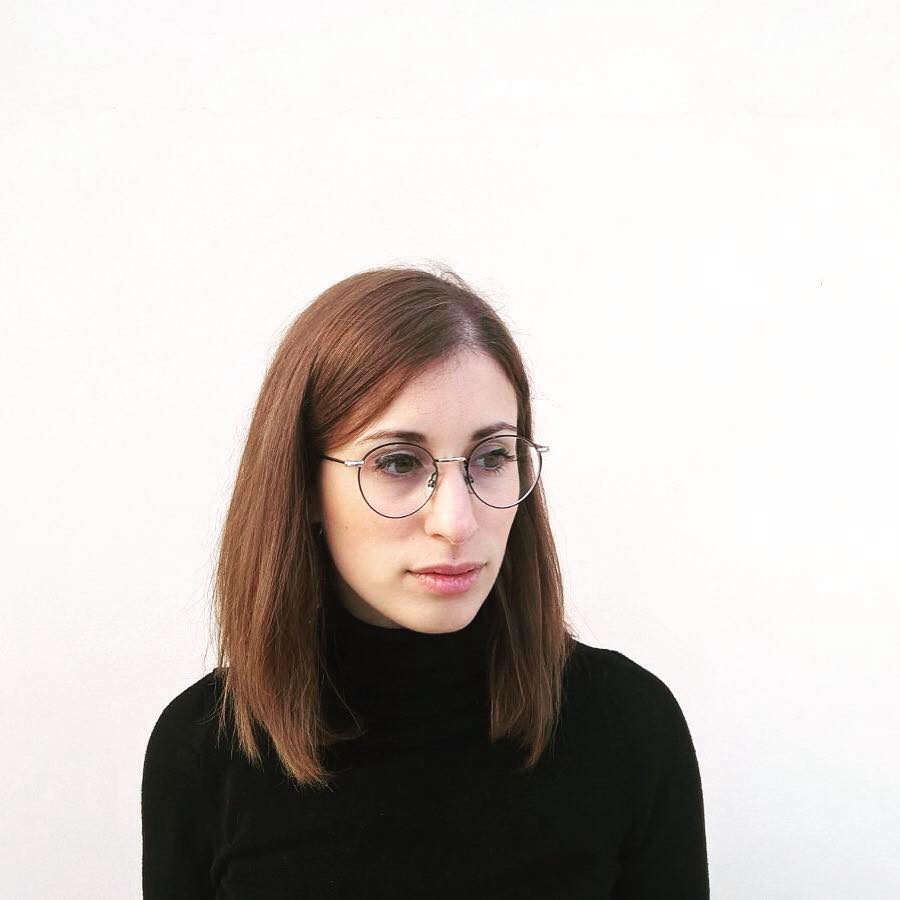
After a degree in Foreign Languages and Literatures, she specialized in Economics and Management of Arts and Cultural Activities at the Cà Foscari University of Venice. She has collaborated with several contemporary art galleries, museums and private foundations in Paris and Amsterdam, before returning to Venice. After a few years working with the Bonotto Foundation (Molvena), she is working as a gallery assistant at GALLLERIAPIU (Bologna).






NO COMMENT